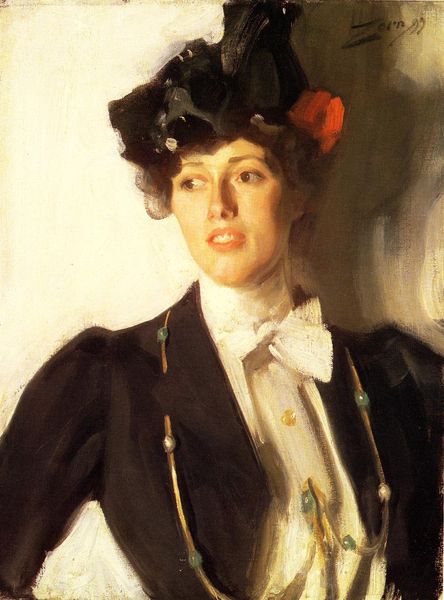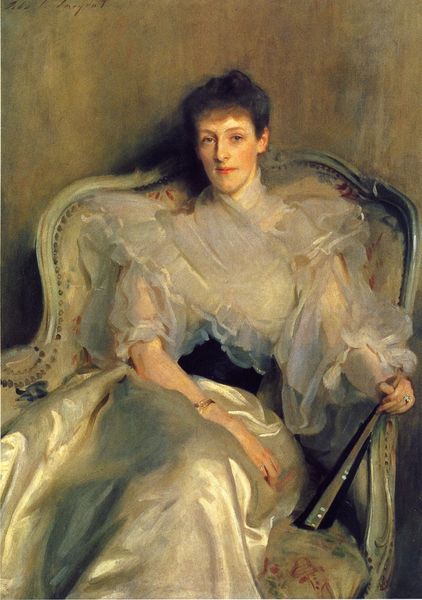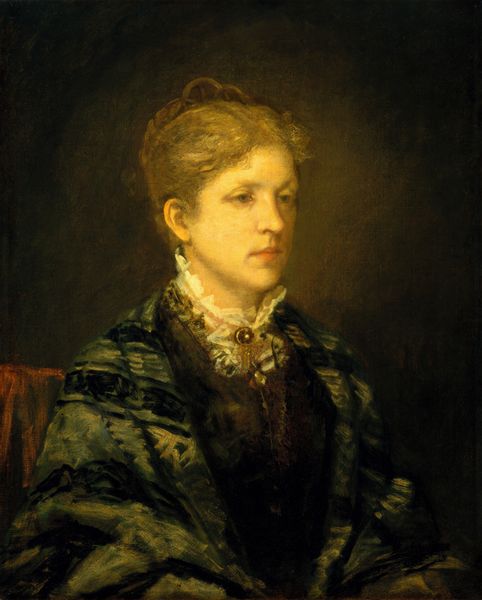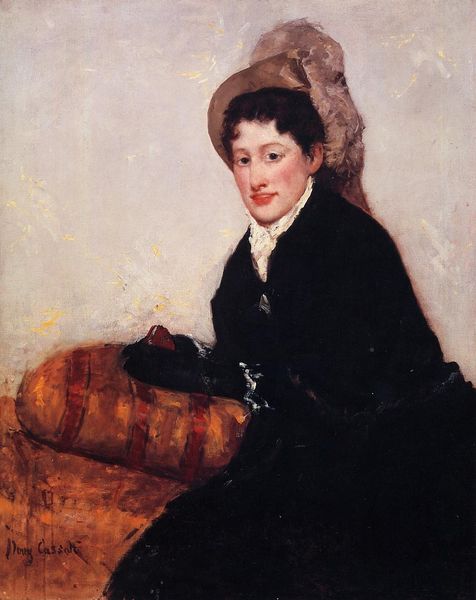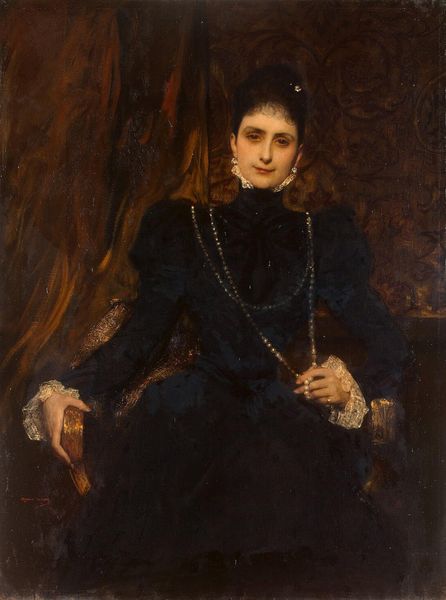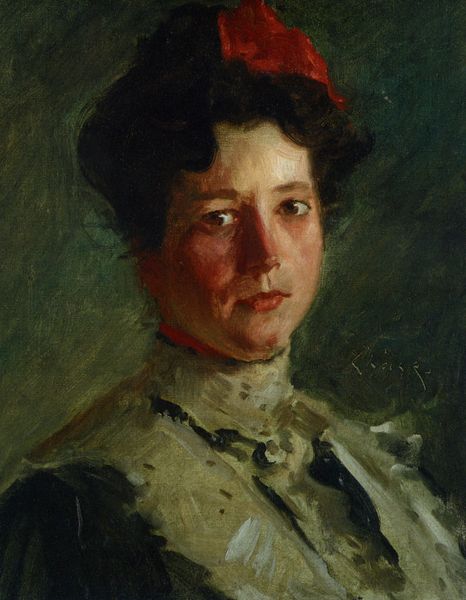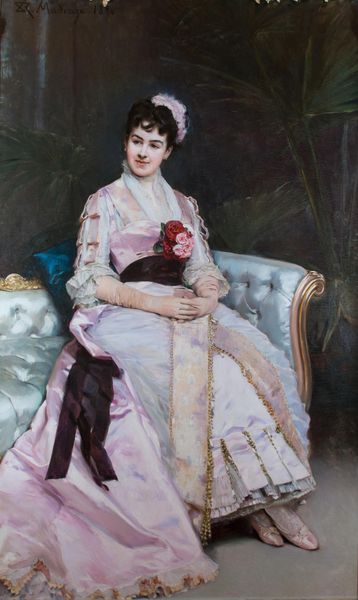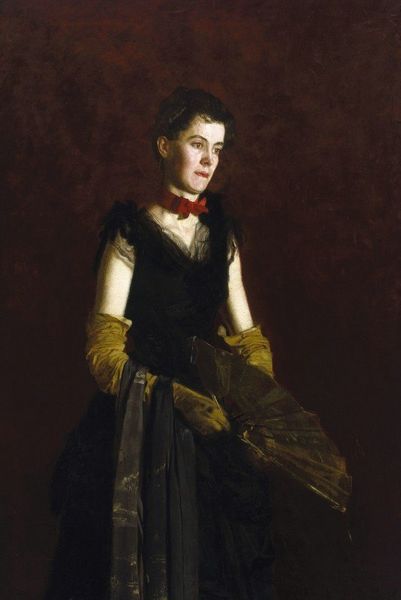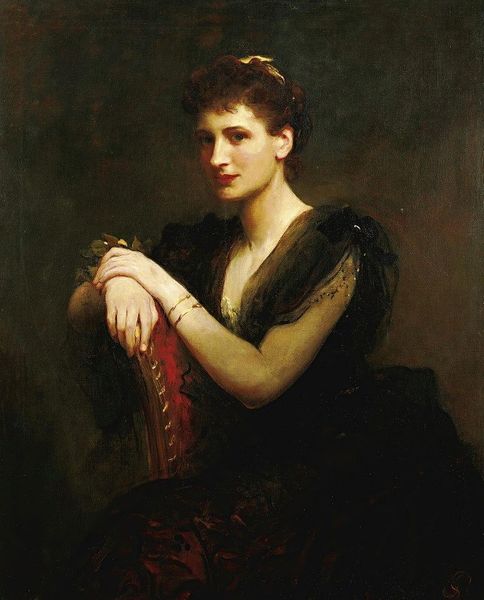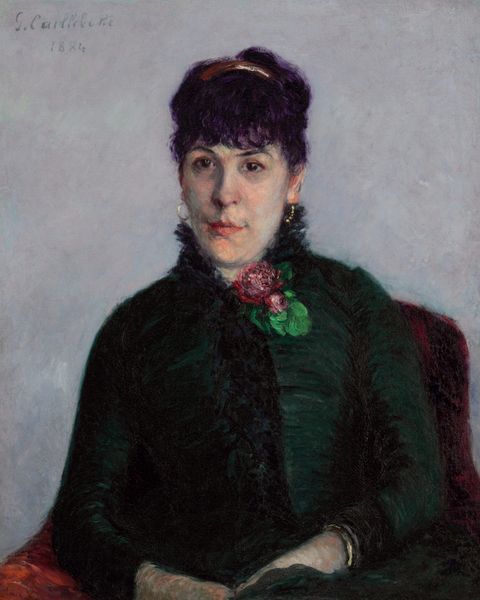
Dimensions: 105.72 x 83.5 cm
Copyright: Public domain
Curator: Miss Frances Sherborne Ridley Watts, painted by John Singer Sargent in 1877. This oil painting, a rather formal portrait, evokes a sense of restrained elegance. What stands out to you in this piece? Editor: The way she's presented, the dark dress against the lighter background, gives off a somber yet poised aura. The red bow adds a slight rebellion to it. What can you tell me about Sargent’s approach in capturing her persona? Curator: Sargent masterfully uses the conventions of portraiture to subtly convey social commentary. Notice how Frances’s gaze, while direct, also carries a certain reserve. The black dress, while fashionable, also functions as a symbol of the limitations placed upon women in that era, wouldn't you say? Her bow reads to me as a statement. What does this tension between constraint and quiet assertion suggest about her position within the social structures of the time? Editor: That’s fascinating. I hadn’t considered the dress as a symbol of constraint. The red bow now seems like a deliberate act of defiance! It feels very personal to her. Curator: Exactly. Consider the emerging dialogues around female empowerment in the late 19th century. This portrait, perhaps unintentionally, contributes to that discourse. Can we read Frances’s posture as a subtle claiming of space, a quiet rebellion against societal expectations? And what might the luxurious fabrics tell us about class and privilege? Editor: So, the painting becomes a document reflecting societal norms and emerging challenges to those norms. I didn't think there was so much that you could glean from just a portrait! Curator: Precisely! By situating art within broader cultural narratives, we can unearth the multifaceted dialogues embedded within seemingly simple artworks. Editor: This has really opened my eyes to interpreting portraits beyond just their aesthetic qualities.
Comments
No comments
Be the first to comment and join the conversation on the ultimate creative platform.
